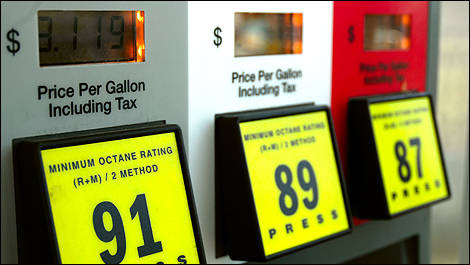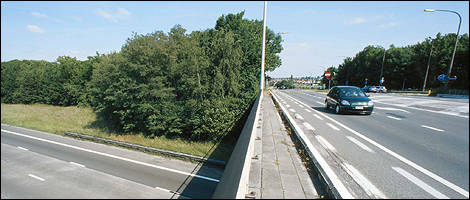Fuel consumption is the quantity of fuel consumed to travel a given distance. Historically it was calculated in miles per gallon (British gallon), but today the standardized fuel consumption ratings used by Natural Resources Canada are expressed as the number of litres consumed to travel a distance of 100 km, or litres per hundred. The US EPA consumption ratings are presented in miles per gallon (US gallon).
A vehicle’s fuel consumption is affected by various factors such as the overall state of the car, tire pressure, road conditions, weather conditions, wind, traffic conditions and, especially, driving habits. In order to offer a comparison tool for vehicles sold in Canada, Natural Resources Canada conducts standardized consumption tests.
“Official” fuel consumption in Canada is expressed in litres per 100 kilometres. However, some advertisements may use miles per gallon (without specifying if it’s a US or British gallon) or give the distanced travelled on a full tank of gas. This distance represents the vehicle’s range and is in no way related to fuel consumption, as two similar vehicles may have fuel tanks of very different sizes.
In order to compare apples with apples, Natural Resources Canada uses yardsticks and a standardized method to establish fuel consumption ratings, eliminating as many variables as possible, such as road or weather conditions. The yardsticks used are litres and metres, and the process is the extremely precise Federal Test Procedure (FTP):
 |
A vehicle’s fuel consumption is affected by various factors such as the overall state of the car, tire pressure, road conditions, weather conditions, wind, traffic conditions and, especially, driving habits. In order to offer a comparison tool for vehicles sold in Canada, Natural Resources Canada conducts standardized consumption tests.
“Official” fuel consumption in Canada is expressed in litres per 100 kilometres. However, some advertisements may use miles per gallon (without specifying if it’s a US or British gallon) or give the distanced travelled on a full tank of gas. This distance represents the vehicle’s range and is in no way related to fuel consumption, as two similar vehicles may have fuel tanks of very different sizes.
In order to compare apples with apples, Natural Resources Canada uses yardsticks and a standardized method to establish fuel consumption ratings, eliminating as many variables as possible, such as road or weather conditions. The yardsticks used are litres and metres, and the process is the extremely precise Federal Test Procedure (FTP):
- Tests are conducted in a laboratory where atmospheric conditions like temperature and humidity are controlled. They are never conducted outside, on a “real” road.
- Tests are conducted with standardized equipment and yardsticks, the precision of which precision has been verified and certified.
- Because there may be a considerable difference between one oil company and the next or between winter and summer fuels offered at the pump, a standardized fuel is used for all vehicles.
- In order to eliminate the risks of anomalies experienced with new vehicles, the selected vehicles are “broken in” for about 6,000 km before testing.
- To simulate the effort required to travel and accelerate on the road, the test vehicle is mounted on a two-wheel-drive chassis dynamometer. A chassis dynamometer is like the treadmills you find in a gym. A treadmill allows the user to walk more or less quickly, on flat or inclined terrain, while staying in the same place. The dynamometer enables us to “push” the vehicle as if it were travelling on the road.
- Four-wheel-drive and all-wheel-drive vehicles are tested in two-wheel-drive mode.
- For these vehicles, however, the resistance of the dynamometer is adjusted to reflect the increased weight and engine load required to drive the extra drive axle.
- Tests are conducted by specially trained drivers.
 |


